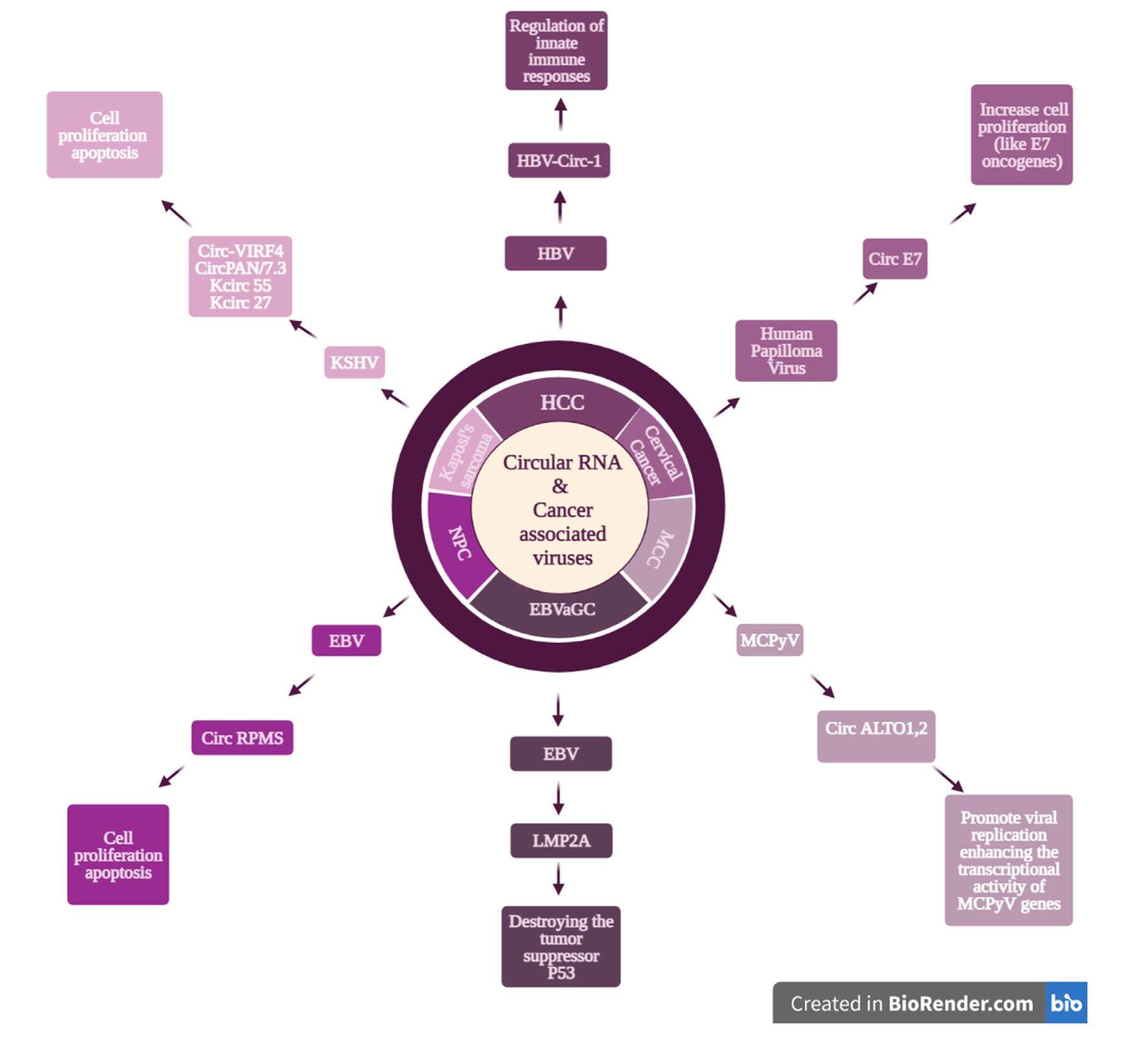
Critical involvement of circular RNAs in virus-associated cancers


Virus-related cancer is cancer where viral infection leads to the malignant transformation of the host's infected cells. Seven viruses (e.g., human papillomavirus (HPV), Epstein eBarr virus (EBV), Kaposi's sarcoma herpesvirus (KSHV), Hepatitis B virus (HBV), Hepatitis C virus (HCV), Human T-lymphotropic virus (HTLV), and Merkel cell polyomavirus (MCV)) that infect humans have been identified as an oncogene and have been associated with several human malignancies. Recently, growing attention has been attracted to exploring the pathogenesis of virus-related cancers. One of the most mysterious molecules involved in carcinogenesis and progression of virus-related cancers is circular RNAs (circRNA). These emerging non-coding RNAs (ncRNAs), due to the absence of 5′and 3′ends, have high stability than linear RNAs and are found in some species across the eukaryotic organisms. Compelling evidence has revealed that viruses also encode a repertoire of circRNAs, as well as dysregulation of these viral circRNAs play a critical role in the pathogenesis and progression of different types of virusrelated cancers. Therefore, understanding the exact role and function of the virally encoded circRNAs with virus-associated cancers will open a new road for increasing our knowledge about the RNA world. Hence, in this review, we will focus on emerging roles of virus-encoded circRNAs in multiple cancers, including cervical cancer, gastric cancer, Merkel cell carcinoma, nasopharyngeal carcinoma, Kaposi cancer, and liver cancer.
